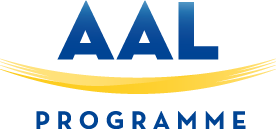Investing in ICT for ageing?
A regional perspective
How to move forward from a Business-to-Business oriented AAL market to a more Business to Consumer oriented AAL market?
October 8th 2014- as part of the European Open Days – a lively side event took place organised by the AAL JP together with Coral, the Community of Regions for Assisted Living, the ENGAGED project and the Action Group Independent Living from the European Innovation Partnership on Active and Healthy Ageing from which the AAL Programme is also part of. About 50 experts and participants interested in new business models contributed to the success of the event. They represented local and regional authorities, AAL businesses, regional innovation clusters, European end user organisations and European organisations representing different stakeholders within the domain of Active and Healthy Ageing.
What problem did we want to solve?
There are plenty of AAL solutions developed and close to the market, many of them resulting from European projects funded by the AAL Programmes http://localhost/aalold/. We all know that the implementation and up scaling of these solutions are a challenge and is not an easy task to fulfil. There are some barriers that need to be solved for the actual deployment of AAL solutions.
Innovative procurement is a challenge, but also a way to contribute to the implementation of AAL solutions. Innovative procurement is not an easy process as procurers are lacking a good overview of innovative solutions. There is not yet a good insight in the evidence on impact of these solutions. We also lack an overview and insight in the actual experiences of end users already who are using these solutions in practice.
The AAL programme facilitates the adequate framework conditions to integrate the end users requirements in the whole lifecycle of the AAL research and innovation projects. Nevertheless end users are not yet sufficiently involved in the implementation of AAL solutions. Like procurers, they also do not have a good overview of all the innovations they could benefit from. Their interest in these solutions is increasing rapidly. Where can they find proper AAL solutions?
Where can they buy these solutions? Which solutions are reimbursable by their government or insurance company? The AAL has launched a manual on methodologies to adequately involve end – users that is available on the following link: http://localhost/aalold/involving-end-users/ The AAL Association is also participating in the EIP AHA in the Action Group C2 Innovative independent living solutions. We work together with other stakeholders like regional authorities on improvement of user involvement as well as on the development of a common approach to improve the evidence culture in Europe.
Both these improvements and good stakeholder collaborations are important constraints to come to new business models as well for AAL solutions. We need new business models to achieve more value creation for citizens and end users. Because of shrinking health care budgets and the pressure on the existing health systems we see that the AAL market is starting to move from a more business-to-business market towards a more business to consumer market. Consumers are ready for it, but the market is not there yet. This is a relatively new market. Companies are not used to communicate directly to end users and consumers. How to do this? What kind of business models needs to be developed? What role can regional and local policies play to stimulate these developments?
This event offered an excellent opportunity to talk more in depth about actions already taken to solve these barriers by different stakeholders and to exchange experiences between AAL businesses and regional and local policy makers and other organisations like development agencies that can support AAL businesses in this transforming AAL market.
Some highlights
Saied Tazari, REAAL and ENGAGED project and Fraunhofer IGD (Germany) claimed: “Interoperability becomes very important when scaling up with the number of stakeholders, services and HW / SW products. The investor of such large-scale roll-outs will benefit from the possibility of avoiding vendor-lock-in, deploying multi-vendor solutions, eliminating some costs by resource-sharing across applications and services, and making its investments future-proof by having support for evolve-ability, compose-ability, etc. Open platforms that establish concrete interoperability guidelines boost these effects through openness and allowing a self-organizing ecosystem to emerge around the platform.
Frank Verbeek, managing director Gociety (Noord-Brabant, NL) with services like GoLivePhone® and GoLiveAssist® presented on why “The smartphone will become more important for seniors, than it already is today for the youngsters”.
Anders Carlsson, process manager at New Tools for Health (Sweden), ENGAGED and Coral said: “New Tools for Health is a regional innovation initiative in East Sweden, which also represents the region in the Coral network and in the CIP project ENGAGED. ENGAGED is a support project to the European Innovation Partnership on Active and Healthy Ageing in the ICT dimension.” His presentation focused on business models for the consumer market, based on a report from a workshop held Bucharest in September as a side-event to AAL Forum 2014.
Serge Smidtas from a French SME gave a presentation of the VisAge network connecting elders with their carers, key points of success, and five advices mostly for public bodies about transparency, data ownership, open data, interoperability and design.
Last part of the afternoon was a set of highly interactive parallel sessions about people value as driver for new business models. Canvases are increasingly used for business development. How can the canvases be used and with what result for your business? In this interactive session, the business model canvas and the people value canvas were used as a tool to support the development of future proof business models for AAL products and services. Dick van Dijk, Paulien Melisa nd Helma van Rijn of WAAG Society (NL) explained the business and people value canvas which was applied by participants with enthusiasm.
For more information on the co-organizers

